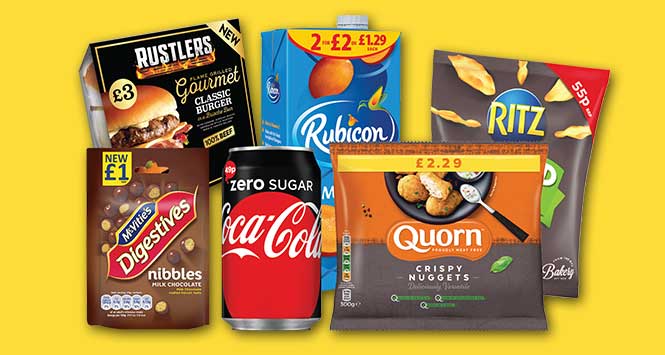For those that don’t know, price-marked packs are when a price is printed directly onto the packaging of a product (as per the image below). This element of pack design is rarely considered a psychological tool to manage price perceptions, but as you might expect, they do have an effect on how shoppers behave and purchase in-store. In a time of economic uncertainty, it’s never been more important to manage the perceptions of the price of products in store.
Warning: There’s going to be a lot of alliteration of the letter P in this blog, so apologies upfront.
Price-marked packs (or PMP for the sake of this blog), allow the product creator the ability to control the RRP on the shelf for the distributors the product is going out to. But interestingly, based on the research we’ve conducted, the PMP can also help with creating better price perceptions.

Image Source: Scottish Local Retailer
What is the effect on price awareness?
When assessing price awareness, a simple tool to understand this involves asking shoppers what they paid for a product, just after picking it up. Surprisingly, not everyone is aware of said price as it just isn’t a consideration for some products of brands. We have conducted a lot of research projects using this method, for PMP, price awareness dramatically increases compared to non-PMP packs.
Rather more surprisingly, awareness of the products themselves also increases when PMP is used (though this can vary with execution).
Highlighting key information like price front and centre helps draw attention, and can be used to better amplify a good price to consumers.

How do PMPs affect price perception?
Bringing price front and centre on the pack also has other advantages it would seem. When asked what played a role in their decision to purchase a pack that had PMP, 77% of shoppers mentioned PMP as one of the triggers to purchase.
When asked why, they said it is because it must mean it’s good value if the price hasn’t been changed, even suggesting that there is a level of trust if the retailer has been unable to increase the price.
Not forgetting how external factors can influence a PMPs impact
All this shows that in the battle to highlight value and low prices for increasingly cash-strapped shoppers, PMP can be a great tool to positively change price perceptions across different categories, brands and retail formats.
With prices rising in every category. shoppers are becoming more and more aware of how much items in their weekly shop should cost, so by implementing an effective PMP rollout, brands can help establish some control over price perceptions and awareness.

How can we help?
At Spark Emotions, we understand that investing in price-marked packs is a significant financial outlay, from the impact on margin, the design and printing of bespoke PMP packaging and then selling it into your accounts.
We are able to help give you confidence before you roll out your price-marked packs. Our team of consumer psychologists and industry experts are able to understand the real perceptions of your consumers and how your price-marked packs may change shopping behaviour. We can identify if the price on the pack will influence purchase behaviour, if the design will resonate with shoppers and if it will help you convert non-buyers into buyers.
Get in touch with us below to find out how we can help you.
Enter your details below

Written by Will Morgan, Associate Director at Spark Emotions
If you have any questions, feel free to reach out to Will via email will.morgan@sparkemotions.com or connect on LinkedIn





